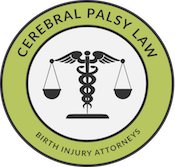What Is Uterine Rupture?
Uterine rupture is a serious labor and delivery emergency that occurs when the forces and stresses of pregnancy cause the uterus to tear open (usually during labor), potentially expelling the unborn baby into the mother’s abdomen. In order to avoid maternal and fetal injury, it is crucial that medical professionals act quickly when rupture of the uterus occurs. Uterine rupture is also known as womb rupture.
If you experienced a uterine rupture during your delivery and your child has been diagnosed with cerebral palsy or another permanent injury, you may be eligible for compensation. Call our Michigan birth injury and uterine rupture lawyers toll-free at (888) 592-1857 or fill out this online contact form and we will help you answer your questions. Our legal and medical team will provide you with a free case review and, if we take your case, you will not be charged until our birth trauma lawyers settle or win in your favor.
What Are the Risk Factors for Uterine Rupture?
- Previous C-section, uterine scars, and vaginal birth after Cesarean section (VBAC): Women with scarring around their uteri or abdomens are likelier to experience a ruptured uterus during vaginal delivery because scarring weakens the tissues and muscles in these areas.
- Use of labor induction drugs: The labor-inducing drugs Pitocin and Cytotec have been linked with rupture of the uterus.
- Post term labor
- Multiple gestation: Women carrying multiple babies are at greater risk for uterine rupture.
- Abnormal fetal presentation (for example, breech presentation)
What Injuries Are Associated with Uterine Rupture?
- Hypoxic-Ischemic Encephalopathy (HIE): HIE, a brain injury caused by oxygen deprivation to the brain, is a dangerous risk associated with uterine rupture. Fetal distress from a lack of oxygen may cause lasting brain injuries with lifelong motor and developmental repercussions such as seizures and cerebral palsy. In the more extreme case that the rupture occurs at the spot where the umbilical cord attaches to the placenta, the baby can be completely cut off from oxygen supply and fatally suffocate unless an emergency C-section begins immediately.
- Maternal hemorrhaging: Extreme bleeding can cause shock (severe loss of blood to the mother and baby), which can limit oxygen and blood to the baby and result in cerebral palsy and brain injury.
- Damage to the mother’s uterus, which may require a full hysterectomy after delivery.
What Causes Uterine Rupture?
Because of uterine rupture’s severe (and often fatal) risks to the mother and baby, physicians must closely monitor the labor of any pregnant woman who has heightened chances of uterine rupture. Medical professionals should be on the lookout for the following risk factors:
- Strong contractions and hyperstimulation: A mother experiencing difficulty delivering has increased chances of rupturing her uterus.
- Pre-existing injury or trauma: Women with past uterine, cervical, or vaginal surgeries are at greater risk of uterine rupture.
- Pre-existing C-section scars: When women deliver vaginally after a past C-section (VBAC), their scars are sometimes not strong enough to support the pressures of delivery and may tear, resulting in a ruptured uterus.
- Use of prostaglandin agents: Prostaglandin drugs such as Cervidil, Prepidil, and Pitocin are sometimes used to induce labor in patients who previously have had C-sections, but medical studies have suggested these drugs may cause uterine rupture.
- Cephalopelvic disproportion (CPD): When the mother’s pelvis is too small to allow the baby to pass through, the additional pressures of labor often result in uterine rupture.
- Grand multiparity: Grand multiparity is the term given to mothers that have had had five or more previous deliveries.
- Placental abruption, which occurs when the placental lining separates from the uterus.
- Malpresentation, which is when the baby is not in the normal head-first “vertex” position.
- Delivery assistance tools such as forceps can cause uterine rupture.
What Are the Signs and Symptoms of Uterine Rupture?
When the uterus ruptures during labor, the following signs may appear:
- Fetal heart rate decelerations or irregularities
- Vaginal bleeding or hemorrhaging
- Severe abdominal pain
- Loss of uterine contractions
- Baby recedes back into the birth canal
- Blood pressure and heart rate problems (hemodynamic instability)
Legal Help for Uterine Rupture
Michigan Lawyers Representing Medical Malpractice Victims with Uterine Rupture, Cerebral Palsy, and Related Birth Injuries
Mothers and their newborns are lucky to escape uterine rupture incidents with minimal physical and emotional harm. Regrettably, this is rarely the case. Lasting damage from uterine rupture injuries are often the result of medical negligence.
For instance, the following instances reflect negligence:
- Failure of a physician to assess the risk factors for uterine rupture
- Failure to order and perform an emergency C-section when the signs and symptoms of uterine rupture occur
Did your ruptured uterus result in your child’s cerebral palsy? If so, don’t hesitate to contact one of our skilled Michigan cerebral palsy attorneys. Call us toll-free today at (888) 592-1857 or complete this contact form for a free evaluation of your child’s cerebral palsy case.
